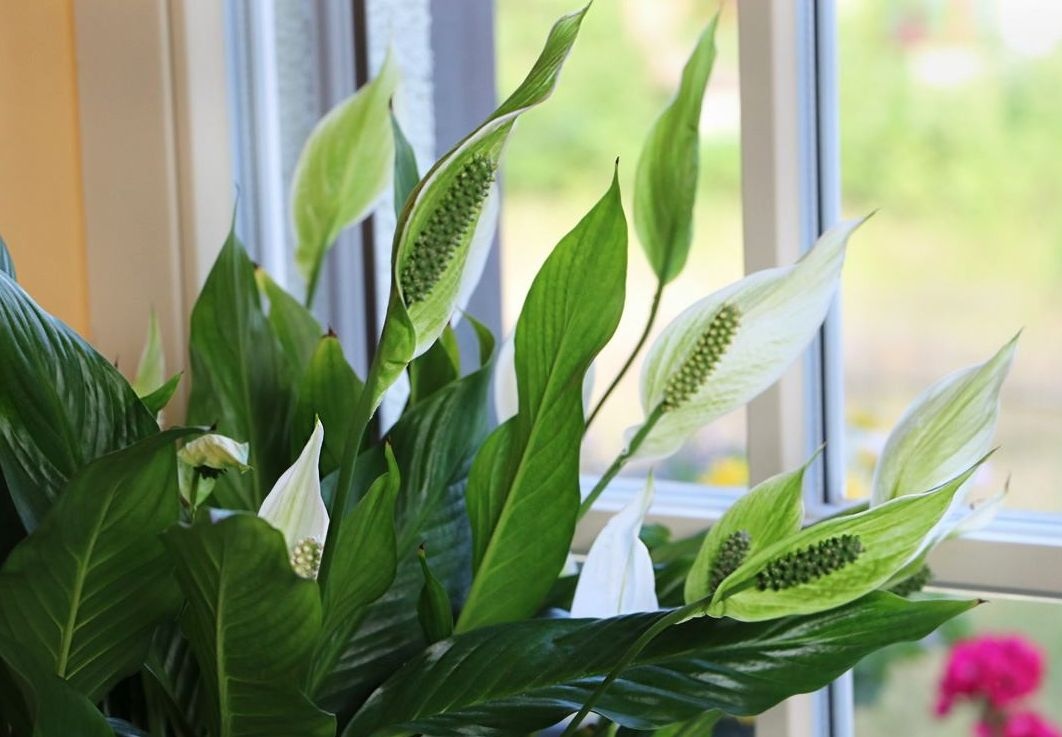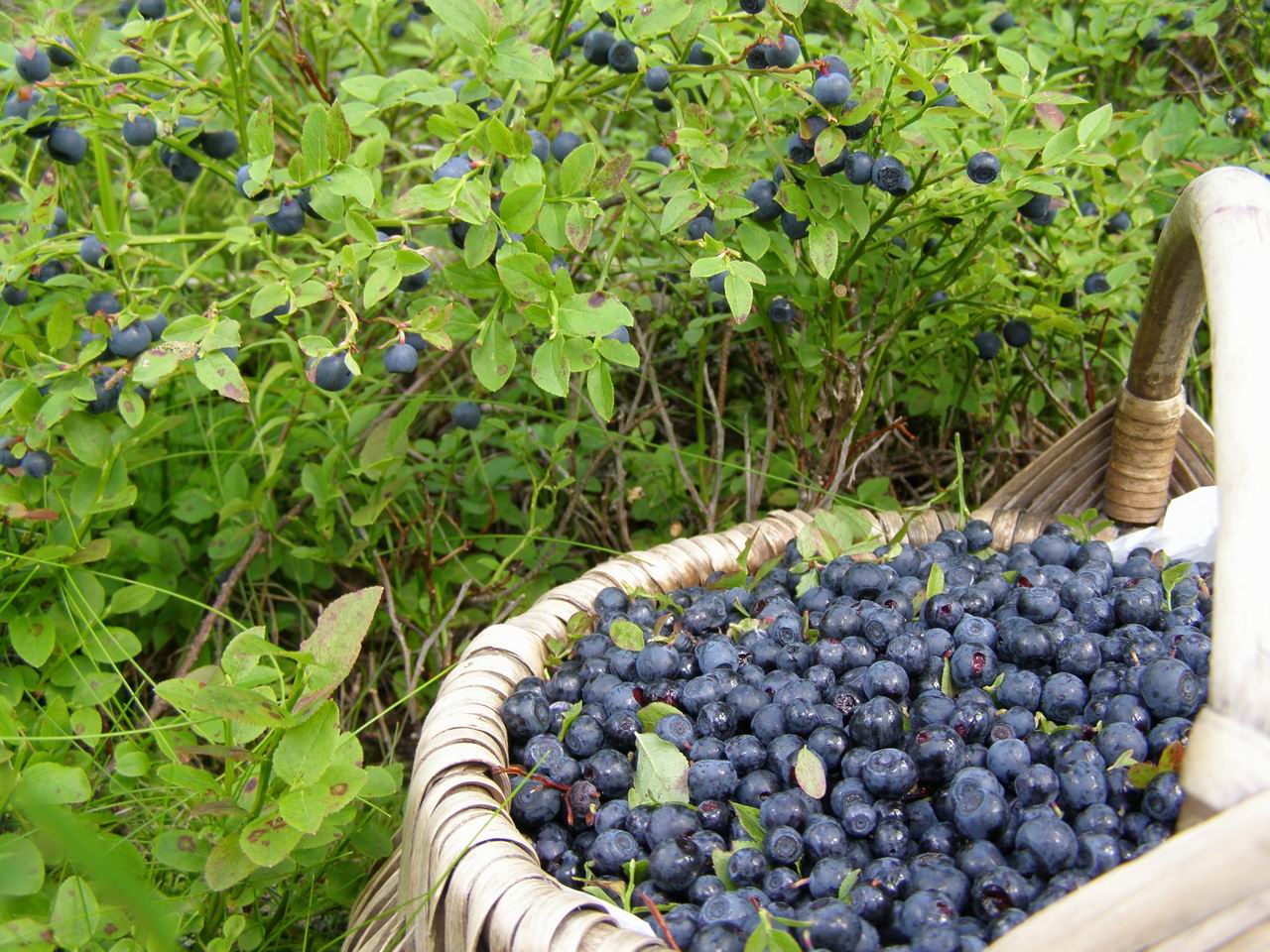Oxalis is a class of perennial annual dwarf shrubs and grasses of the oxalis group. The group numbers about 900 varieties, usually growing in Africa, America, and only a few are found in Europe.
Hot countries are home to oxalis, so plant care should be appropriate. If all favorable conditions are correctly recreated, the plant will delight with lush growth and year-round flowering.
Content
Description of acid, photo
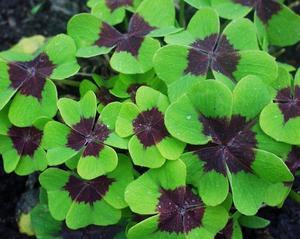 The plant has alternate palmate or ternary leaves, with a complex bend and petioles. The leaves are clawed, in rare cases pinnate, fold and hang with the change of the phase of the day, with irritation or bright lighting.
The plant has alternate palmate or ternary leaves, with a complex bend and petioles. The leaves are clawed, in rare cases pinnate, fold and hang with the change of the phase of the day, with irritation or bright lighting.
The inflorescences are regular, arranged in a fivefold row, the petals are yellow, pink or white, the number of stamens is 10. Oxalis has three color options with different column sizes:
- short (less short stamens);
- medium (located between short and long stamens);
- long (more stamens).
The flower is a box that opens along the shutters. The seeds are in several pieces in a nest, have a fleshy membrane, which, when opened, bounces off, promoting seed spread... By the way the seeds are spread, the plants are ballistae.
The peculiarity of the plant is the beautiful streaks of pink color on the petals of "exploding" inflorescences, when ripe they shoot out small red seeds. Also, a feature is that with the arrival of night, in cloudy weather, in bright light, flowers close upand the foliage curls and falls.
Movement under the influence of these factors occurs as a result of changes in internal pressure (so-called turgor) in the cells of leaves and petals.
Some varieties can plant in open ground under trees and bushes, some are grown only at home and in winter gardens. There are weeds among the sour, it is quite difficult to stop their development. Therefore, be careful when choosing.
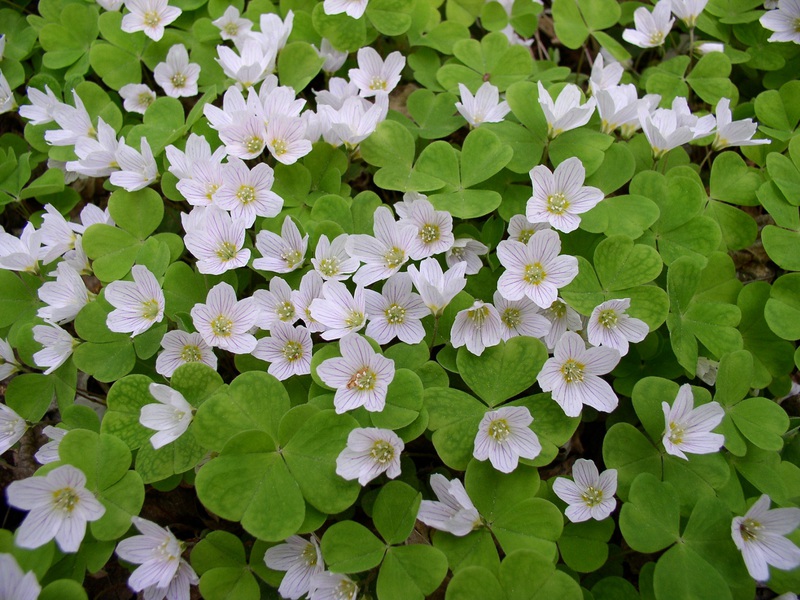
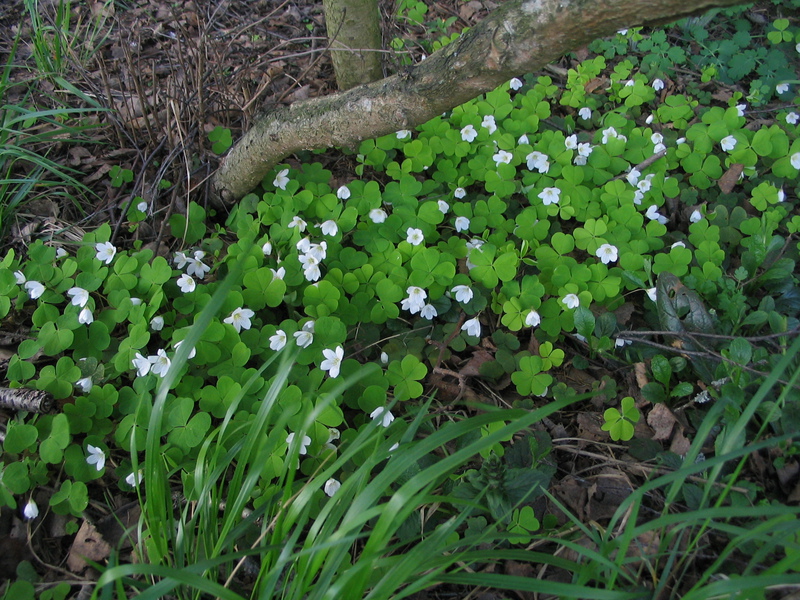
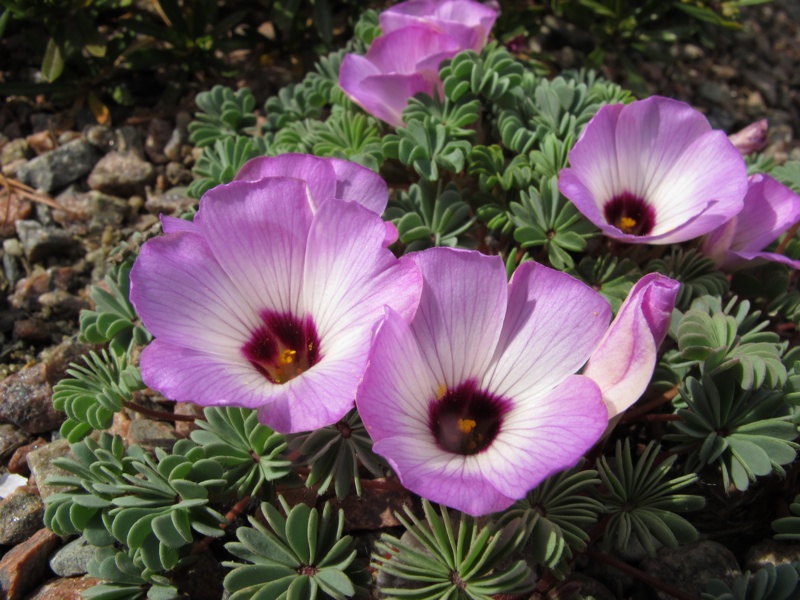
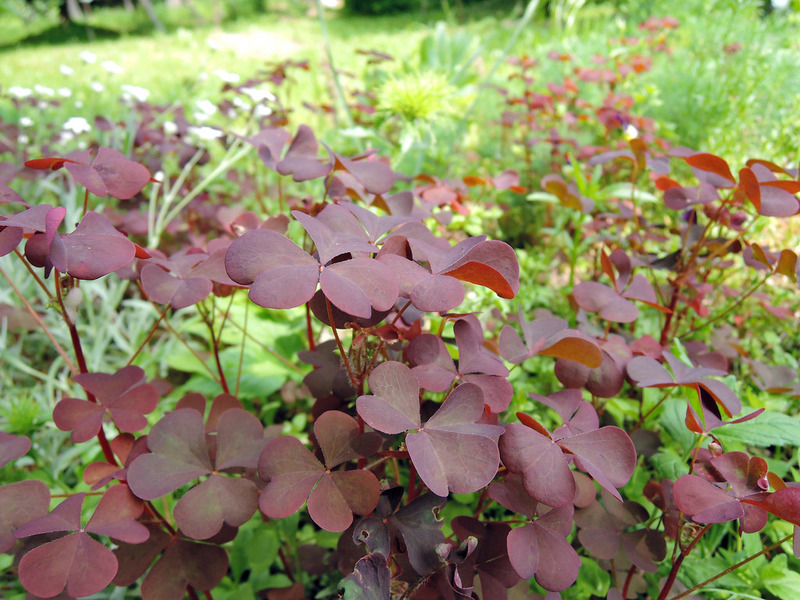
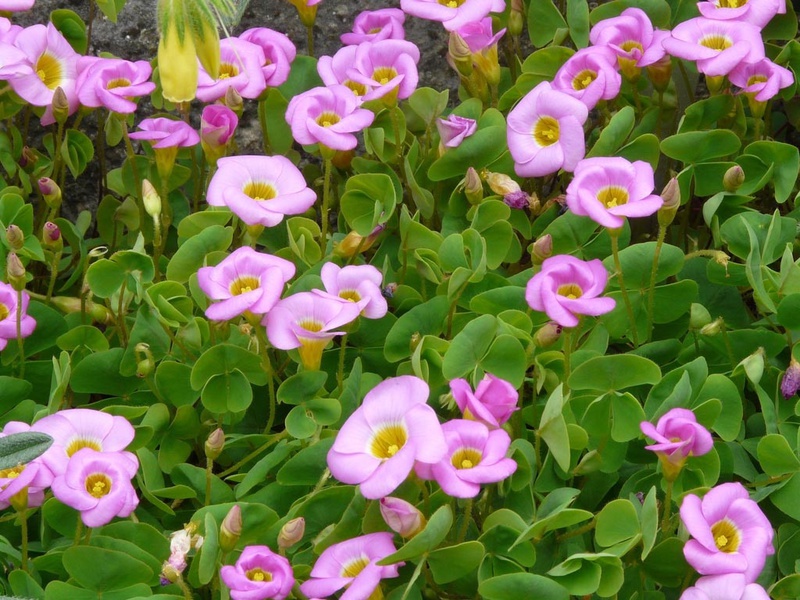
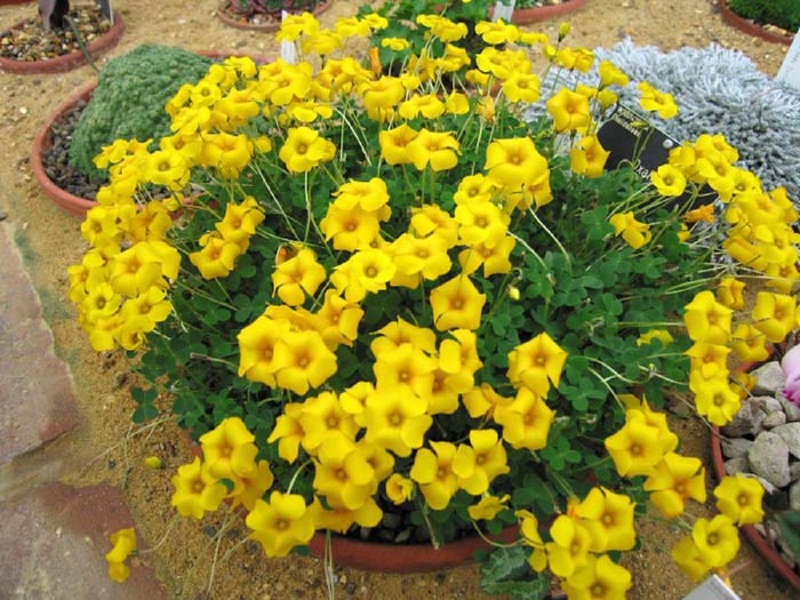
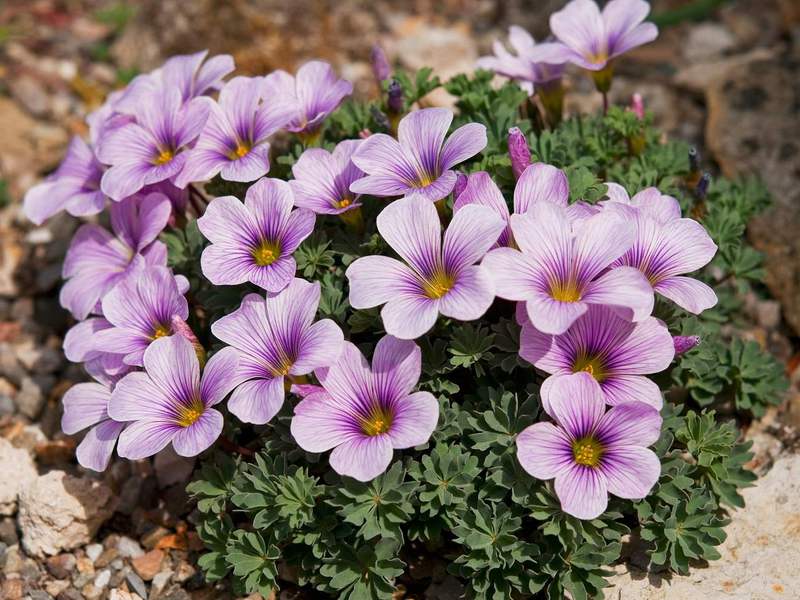
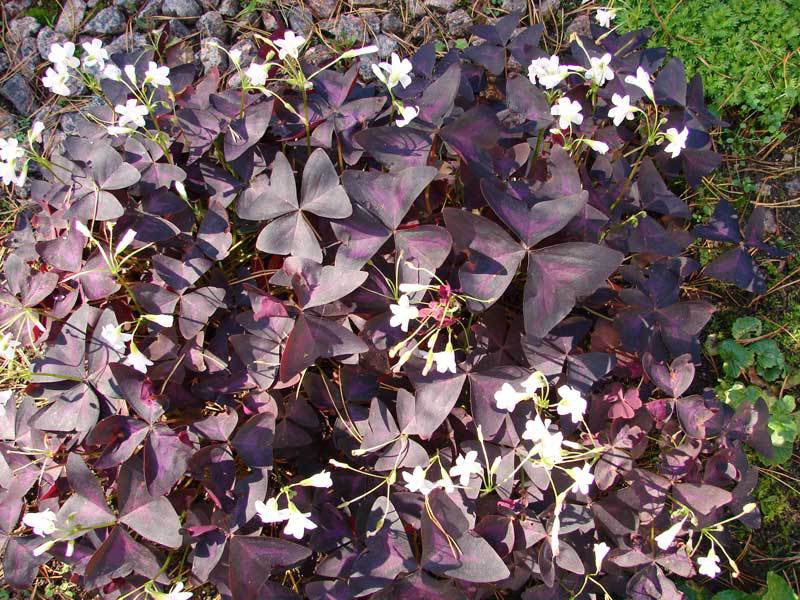
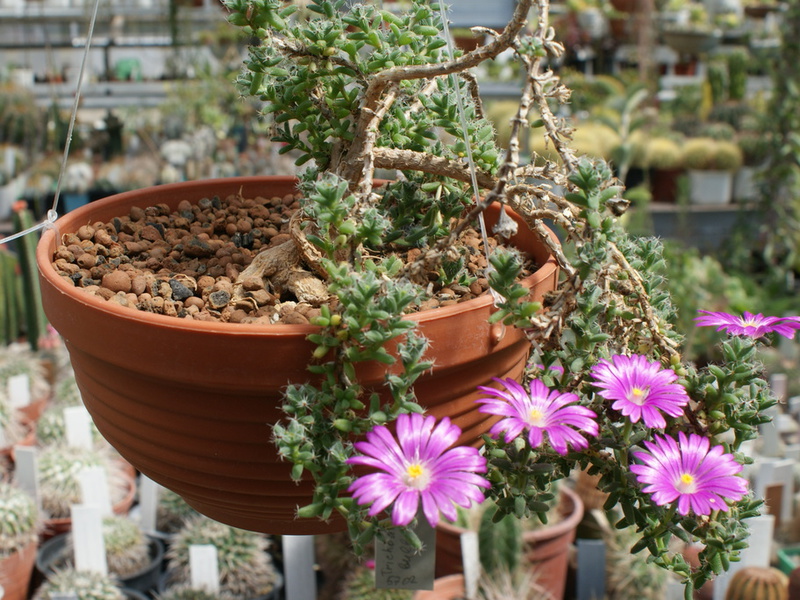
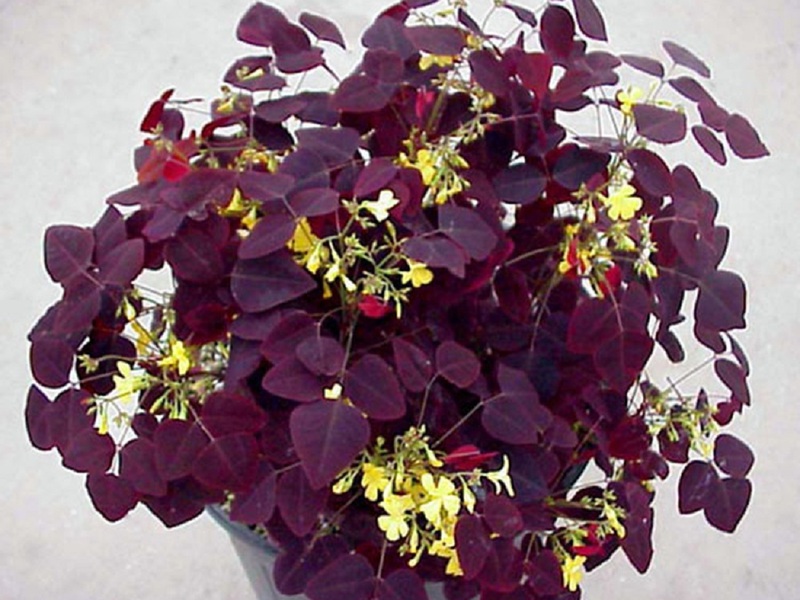
Oxalis ordinary... A small plant growing in deciduous, tropical and coniferous forests. In our area it is better known as "sourness" or "hare cabbage". This plant has several types of flowers:
- Closed, self-pollinating.
- Open, pollinated by insects.
Cleistogamy is the main plant adapted to life in coniferous forests, in which there are few insects for pollination. During the ripening of the inflorescences, the seeds are scattered within a radius of up to a meter. In addition, ants carry the seeds.
Ferruginous oxalis... The most popular garden plant, 7 cm long, forms small bushes up to 17 cm wide. Green leaves are composed of multiple (10–20) oval particles. The flowers are large silvery with pinkish blotches. Winter-hardy variety.
Carob oxalis... Weed. It is characterized by beautiful red-brown leaves and small yellowish inflorescences.Multiple aerial shoots can clog both flower beds and beds, therefore, deciding to plant this plant variety on a hill, carefully look after it.
Poor oxalis... Long-term bush, quite frost-resistant. From small nodules forms trifoliate leaves on small petioles, and then dark pink inflorescences with white intersperses. It blooms in autumn, the best place is in a sunny area.
Valdivian acid... A plant with leaves on elongated petioles (35–40 cm) with yellow flowers with reddish blotches. Usually planted as a curb plant, for group planting on lawns and flower beds.
The main varieties of oxalis varieties
 Oxalis Ione Hacker. It is characterized by beautiful and large, fragrant purple flowers with dark veins. Blooms in June. Most often used for alpine slides... Needs good sunlight and a well-drained area.
Oxalis Ione Hacker. It is characterized by beautiful and large, fragrant purple flowers with dark veins. Blooms in June. Most often used for alpine slides... Needs good sunlight and a well-drained area.
Nasturtium oxalis... A small bush with purple leaves and yellowish buds that bloom alternately throughout the summer. Suitable for curbs and carpet flower beds.
Succulent oxalis... It is characterized from other species by the presence of four compound leaves and a pink inflorescence. The bush is 35–40 cm in size, blooms before winter. This plant is also cultivated at home, as an ampelous plant.
Oxalis flower... Quite an ornamental bush. It lives, as a rule, in coniferous forests. Long-term plant up to 25 cm, suitable for planting in open ground. Leaves up to 6 cm in size, triangular in reverse, with a shallow notch on top and sharp parts on the side.
Hairy oxalic acid... Quite winter-hardy variety. In summer, purple-pink flowers appear on the bush. Unpolished leaves of complex shape have 6-9 simple leaves.
Oxalis hedizarium... An evergreen shrub of small length, up to 25 cm, has brown shoots and trifoliate leaves. The peduncle is axillary with several yellowish flowers. Suitable for growing at home.
Red oxalis... A relatively large plant with shoots up to 45 cm in size. The bush is most often planted in flower boxes. Leaves near the base are fleecy and trifoliate. In summer, red flowers prevail over them.
Triangular oxalis... It has purple and pink inflorescences and purple leaves. The frost-resistant bush is grown in container or at home.
Purple oxalis... Perennial plant up to 11 cm. It has dark round fluffy leaves 6 cm wide, creating rosettes of 7 leaves. Flowers are white or pink. It is planted both at home and on open ground.
Depp's acid
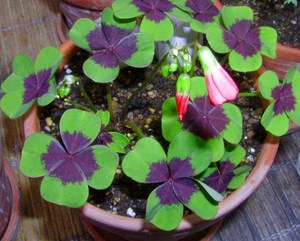 Depp's acid does not have stems, it is a perennial plant. This kind of acid was born in Mexico. It has modest crimson-pink flowers, but its flowering period is quite long: it starts in spring and ends in late autumn. She needs a lot of light, but direct sunlight should be avoided.
Depp's acid does not have stems, it is a perennial plant. This kind of acid was born in Mexico. It has modest crimson-pink flowers, but its flowering period is quite long: it starts in spring and ends in late autumn. She needs a lot of light, but direct sunlight should be avoided.
Excessive watering is not required, but care must be taken so that the soil does not dry out... Spraying is not required. During the rest period, watering stops altogether. Usually, this period is from one to one and a half winter months.
In winter, the plant pot is removed to a cool but dry place. In this case, the temperature should be 12–140C. In the summer, you can take the plant out into fresh air.
Small tubers are formed on the rhizome of Depp's sour cherry, which are used for reproduction. This plant can also reproduce with daughter bulbs.
How to care for a plant
 Some forms do not require much maintenance. They can be planted outdoors under shrubs and trees, while others are only grown in greenhouses or living quarters.
Some forms do not require much maintenance. They can be planted outdoors under shrubs and trees, while others are only grown in greenhouses or living quarters.
Among this plant there are weeds, which is very difficult to stop reproduction. Therefore, be careful when buying. They are often cultivated as indoor plants, although the bushes are very short-lived.
Proper care of your oxalis plant can provide several factors:
- Temperature. In summer and spring, the plant prefers a nursing temperature of 21-24C. In winter, it is at rest, the bush is kept taking into account the variety at 11-19C. The Ortgis variety requires a temperature of 15-17C in winter.
- Lighting. This plant prefers bright, diffused lighting. Best suited for installation on an east side windowsill. When installed on windowsills on the south side, shading or organization of diffused light with a translucent material is necessary.
- Air humidity. The bush loves periodic spraying, especially in summer and spring. The rest of the time, spraying is not required.
- Watering. In spring and summer, with intensive growth, abundant watering is required as the soil dries out. In the autumn, I reduce watering.
- Fertilizer. From May to September, the plant is fed with mineral fertilizers. Groundbaits are made at monthly intervals.
Reproduction methods for oxalis flower
 Oxalis is most easily propagated by seeds, they are sown in spring. In the first year of life, only underground shoots and rosettes of foliage appear, and the next season curtains begin to form from the axils of the foliage, new rosettes will begin to sprout from above-ground shoots.
Oxalis is most easily propagated by seeds, they are sown in spring. In the first year of life, only underground shoots and rosettes of foliage appear, and the next season curtains begin to form from the axils of the foliage, new rosettes will begin to sprout from above-ground shoots.
Also can be propagated by nodules... They are planted at the end of February, 7-9 pieces in one container, sprinkled on top with a layer of soil of 1 centimeter. Composition of the substance: turf, leaf and sand, in a ratio of 2: 1: 1. Before the appearance of the root system, after planting, the bush is kept in a cool place with a temperature of 4-9, watered with a small amount of water. From mid-spring, the temperature increases.
In flower beds, nodules can be transplant at any time... For example, you can plant in the middle of autumn and get a bush with lush foliage for the New Year. Several pieces are transplanted in an 8 cm container, into the substance of sand, earth and compost in a 1: 1: 2 ratio. Before the emergence of the root system, the containers are placed in a place with a temperature of 4-9C, and at the beginning of growth, they are moved to heat.
When determining the flowering time, it must be borne in mind that the full development cycle from the time of planting the nodules can last approximately 45 days. Thus, the plant, after transplanting in the spring, will bloom until the end of autumn.
Some varieties can multiply as nodules, and cuttings, they take root in the sand after 19-22 days at the correct temperature of 24C. In this case, it is necessary to ensure shading from direct sunlight.
There are some peculiarities during the cultivation of this plant. The cultivars, in which the aboveground part does not die in winter, are installed in a moderately cold and brightly lit room (15–17C) and not watered strongly two days later, after the top layer of the earth has dried, with a small amount of water.
Varieties in which the aerial part dies in winter reduce watering several months before winter dormancy. The soil contains only nodules that can be stored in a cool and brightly lit place (11-13C). During this period, no special care is required.
The soil must be kept in a moderately moist state, but without drying the earthy coma. After the appearance of the first shoots, the bush slowly transferred to a warm place... Flowering occurs after about a month.
Oxalis is a pretty graceful bush with beautiful flowering. The plant is suitable for planting in lighted cool rooms. At the same time, oxalis has an important difference from other indoor plants: nodules can be planted at any time and calculate flowering by a certain date.
